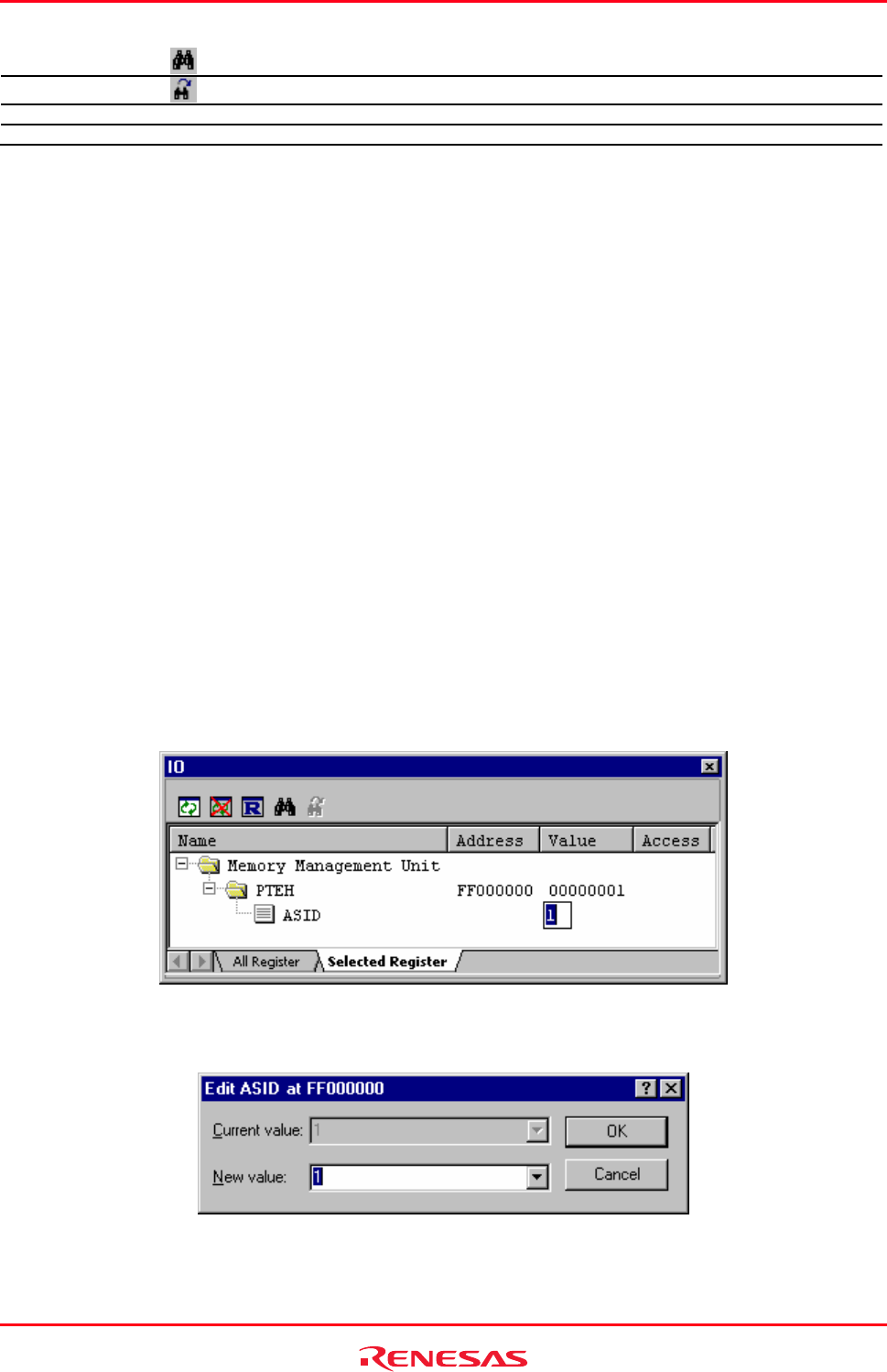
High-performance Embedded Workshop 17. Using the Debugger
REJ10J1837-0100 Rev.1.00 Nov. 16, 2008
336
Find
- Finds an I/O register.
Find Next
- Finds the next I/O register to match.
Toolbar display - - Shows or hides the toolbar.
Customize toolbar - - Customizes toolbar buttons.
17.6.2 Expanding an I/O register display
To
display the names, addresses and values of the I/O registers, double-click on the module name or select the module
name, by clicking on it or using the cursor keys, and press the cursor right key. The module display will expand to show
the individual registers of that peripheral module and their names, addresses and values. Double-clicking (or pressing
the cursor left key) again on the module name will close the I/O register display.
Note:
If you are using an emulator-based debugging platform, reading data from an I/O register can sometimes affect the
operation of your program. For example, reading a data register can cancel a pending interrupt. Data is only read from
I/O modules that have been expanded in the IO window (so that the register values are displayed). Therefore, as long as
I/O modules are collapsed when they no longer need to be displayed, this will not cause a problem. Also, note that
having a Memory window (or Disassembly window) open on the I/O area can have the same effect.
While Lock Refresh of the IO window is active, no data will be read out even if an I/O register display is expanded.
17.6.3 Modifying the values of I/O registers
The
values of I/O registers can be modified in the IO window.
To modify the value of an I/O register
Select either of the following ways.
• In-place edit in the Value column.
• Double-click on the line of the I/O register or bit to open a dialog box in which the values can be changed. Enter a
value in New value.


















